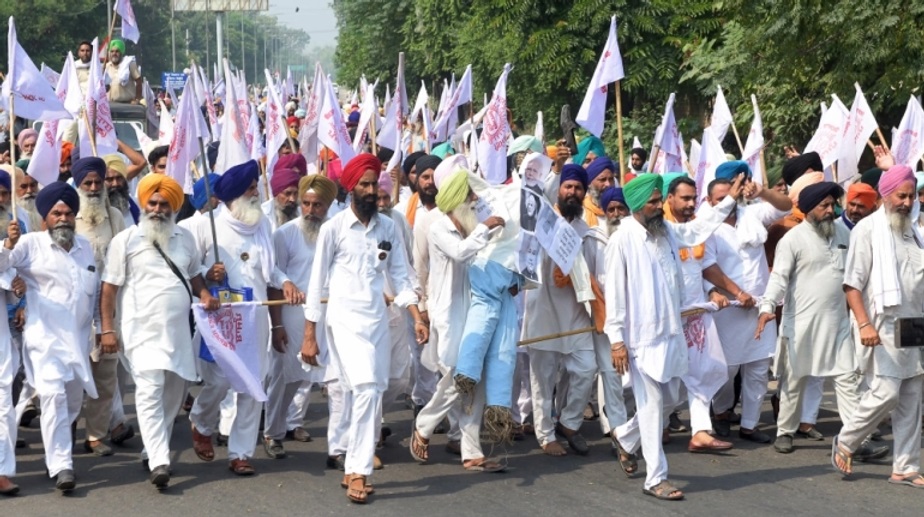BY: Navomee Ponnamperuma

PEJOURNAL – In the midst of a global pandemic, a social movement gone largely unnoticed in the Western media has been the farmers strike in India. Whilst exposure was provided in its early days, the movement lost much of its media appeal as the West turned their attention towards the chaotic political scenes occurring on both sides of the Atlantic.
Indian farmers however have persisted in their fight. A fight which commenced in September following the Indian government’s decision to pass new regulations providing private investors access to the country’s agricultural sector.
At first glance, the farmers’ protests can be viewed as just another political movement under the Modi administration, given how protests have colored much of Modi’s presidency. That is to say that the Indian Prime Minister is no stranger to mass demonstrations, and indeed, until now has usually emerged unscathed.
However, in the current political climate, Modi’s stronghold appears to be diminishing, and public opinion shifting as Indian farmers express their anger in masses across the country.
Agriculture while accounting only for one-sixth of India’s GDP, currently employs more than half of the Indian workforce. Under these new agricultural reforms, farmers now fear that they will not be able to compete with the big corporations who will most likely drive down crop prices and thus, destroy the livelihood of many small farmers.
From an economic standpoint, the move to modernize India’s farming industry may seem overdue. Under the new regulations, farmers will now have more autonomy in their dealings as well as an opportunity to earn increased prices for their crops, a flexibility that would not have been possible under the previous system whereby farmers sold their crops to licensed middlemen at government-regulated market yards (mandis).
However, the deviation from the so-called ‘mandi system’ has been received negatively, as farmers fear these reforms mark the beginning of privatization of the agricultural sector. Farmers who relied on wholesale markets and assured prices, argue they will now be at the mercy of big corporations who will not hesitate to exploit them.
The government has been quick to underline that these reforms do not include an abolishment of the mandi system, yet the rapidity in which these reforms have been passed as well as government’s failure to consult the farming community prior to any decisions, have increased suspicion regarding Modi’s true motives behind these reforms.
One could argue that it has never been in Modi’s style to consult the public when making such drastic decisions, and until now that has been somewhat accepted by the majority. Yet, the sight of elderly protestors braving the cold winter as farmers arrive from Punjab, Haryana and Uttar Pradesh to New Delhi, has drawn nation-wide support. As the Washington Post highlights, ‘there is a subliminal collective guilt at the sight of [Indian] farmers’ in makeshift camps and sleeping under tractors as protests continue.
The movement has found further solidarity in the international community, especially those with personal ties to India, whether it be first or third generation Indian immigrants. For scholar Simran Jeet Singh, the pandemic has only augmented support for the farmers’ movement as the plight of Indian farmers has come to symbolize the suffering of essential workers around the globe.
India currently stands as the world’s largest producer, consumer and exporter of spices and second largest producer of rice, wheat and other cereals. Thus, for many international observers, the resistance of Indian farmers to Modi’s agricultural reforms is indicative of a larger social struggle in modern society. The increased liberalization of markets, especially in developing countries, have allowed big corporations to monopolize whole sectors, which in turn has led to states prioritizing interests of these multinational corporations as opposed to those of the ordinary worker.
In the case of India, as agricultural policy expert Devendra Sharma rightly points out, the fate of millions will be left to the tyranny of markets, and in a country where agriculture employs half of the workforce, such uncertainty should be a great cause of concern for the political and business classes.
During previous demonstrations, Modi has been able to garner public support by framing his actions as part of his nationalist agenda. He has been able to brush off his critics by simply calling them ‘anti-nationals’. But today, he is facing a protest that has national (and international) backing and cannot be subdued using the usual anti-nationalist rhetoric.
As Modi’s opponents join forces with the various farmers’ unions spearheading the protests in New Delhi, the pressure to repeal the reforms intensifies each day. Talks have been held to try and reach an agreement between the two parties, but with no success. Indeed, the latest government proposals have been referred to by one of the protest leaders as merely ‘cosmetic changes’, reaffirming the general sentiment that the only resolution is a complete recall of the new laws.
As farmers show no intention of backing down, the government’s response will not only determine the future of India’s agricultural sector, but also of the Prime Minister’s own political party. A successful repeal of the laws might expose the limitations of Modi’s nationalist agenda, arguably a setback for his government.